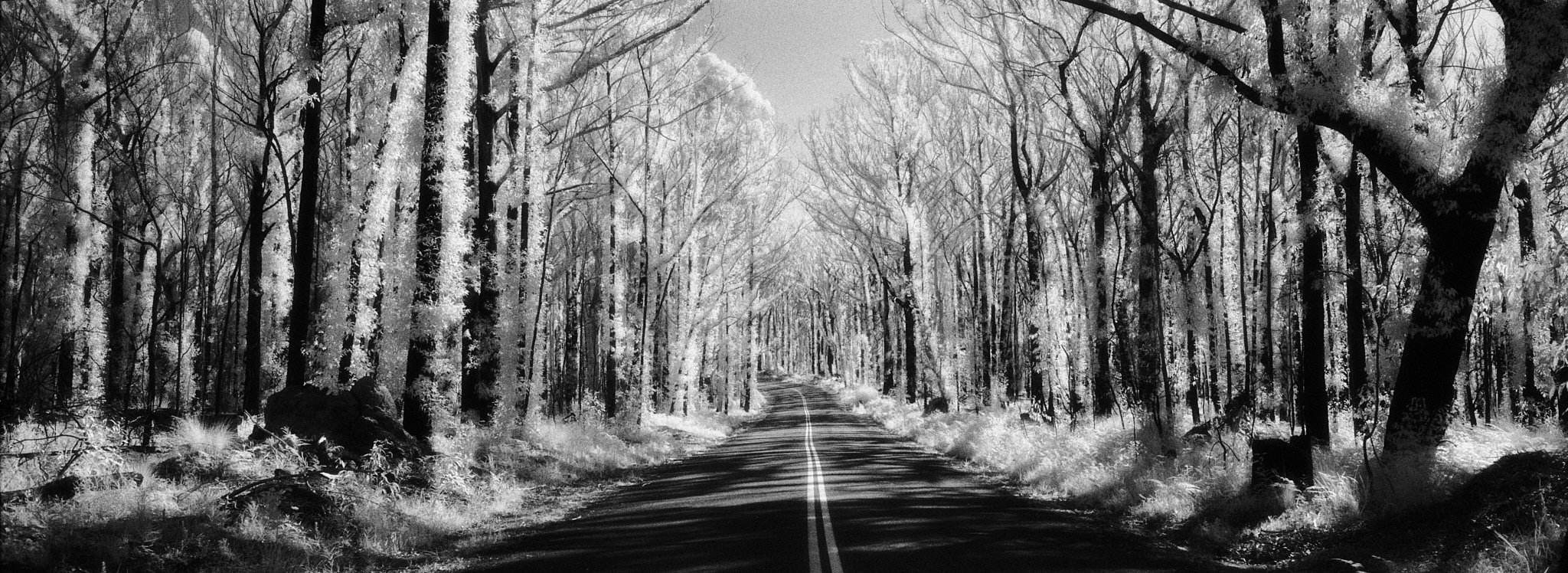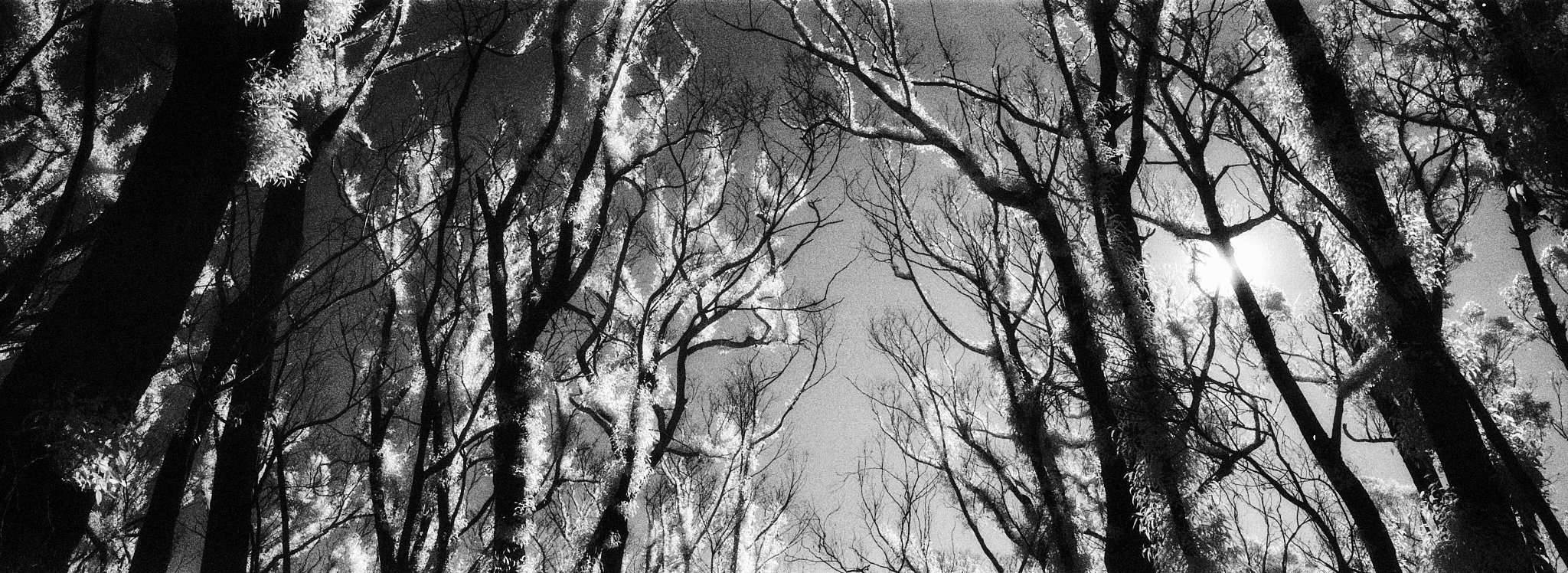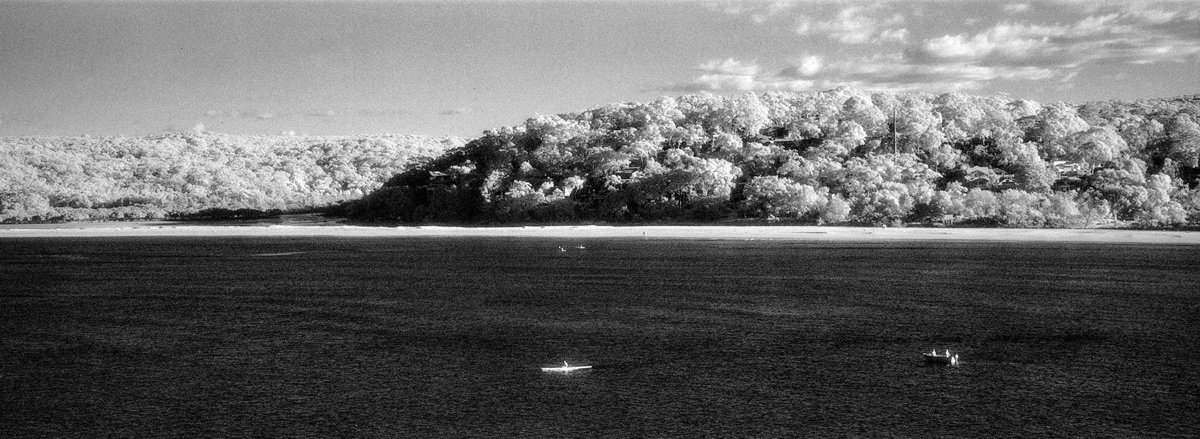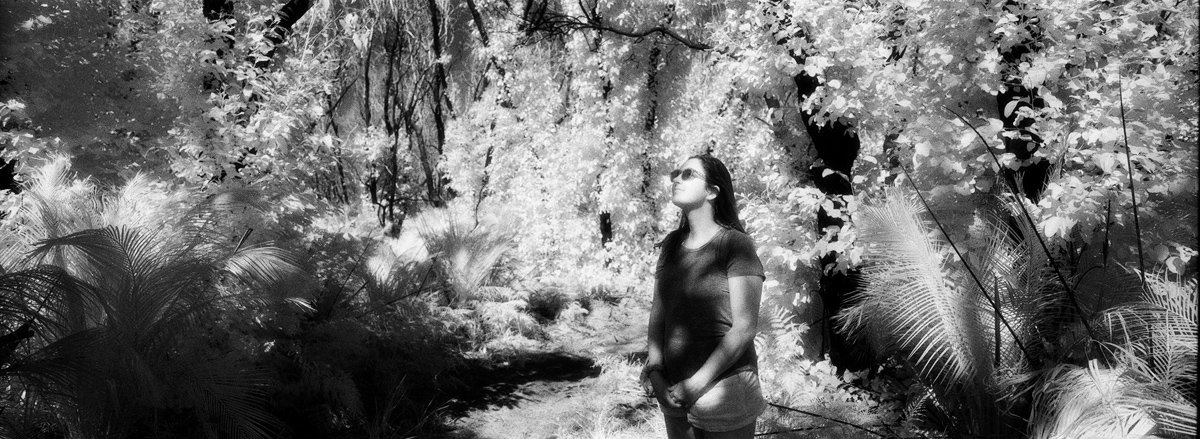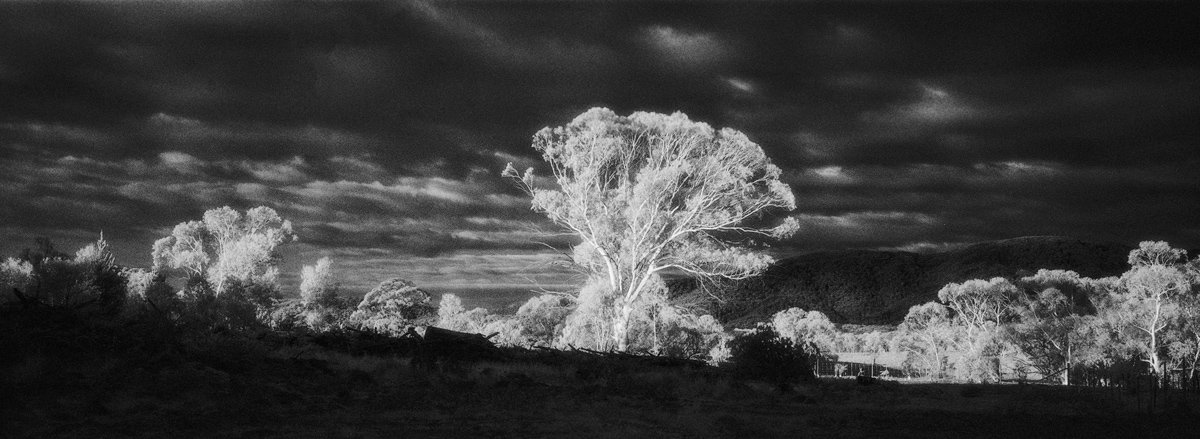A complete guide to shooting Kodak High Speed Infrared (HIE/HSI) black and white film
Kodak HIE shot with a Fuji TX-2 (xpan), 45mm f4, Red 25a filter. ISO set to 400 and metered through the filter.
Ever since I started shooting Kodak HIE, I had wanted to write a guide to shooting it that consolidated all the advice I had both received, discovered in my research, or found out through my own experience. You can also check out the detailed post I’ve done on shooting Kodak Aerochrome (false colour infrared film) here and the project I’ve been shooting on Aerochrome called Karrikins here; if you find this information helpful, the best way to support me would be to purchase a print which are available for sale in my store, or consider sending me a few dollars via paypal.me/robertwalwyn.
Note this page is still under development and will be updated in the future.
What is Kodak High Speed Infrared film (HIE/HSI)
Kodak HIE (also known as High Speed Infrared or ‘HSI’) is an infrared sensitive black and white film. HIE doesn’t refer to just a single film emulsion - in fact there were many different iterations manufactured over the years since the early 1930’s until the film’s eventual demise. The latest and most modern iteration of this film, Kodak High Speed Infrared (HIE) was ultimately discontinued in 2009 (with 4x5 and 8x10 sheet film sizes being discontinued in 2000 due to decreased demand).
Infrared (from the Latin ‘infra’, meaning ‘below’) light refers to wavelengths of electromagnetic radiation that are ‘below red’, i.e. longer wavelengths than the visible red light that is at the edge of the spectrum the human eye can perceive. The fact that the film is ‘infrared sensitive’ just means that the film is sensitive to (and therefore can be exposed by) these wavelengths of light that are invisible to our eyes. Kodak HIE is particularly special in that it is sensitive to the longest wavelengths of infrared light of any conventional film, being sensitive to wavelengths of light out to ~ 900nm (with the human eye’s edge of the visible spectrum being about 740nm).
Kodak HIE shot with a Fuji TX-2 (xpan), 45mm f4, Red 25a filter. ISO set to 400 and metered through the filter.
How to Shoot Kodak HIE
First and foremost, I would highly recommend reading the Kodak Data Sheet F-13 for this film (https://125px.com/docs/film/kodak/f13-HIE-200006.pdf) as it contains a wealth of information about using this rare and precious film properly.
When shooting Kodak HIE, a filter needs to be placed in front of the lens to limit the exposure of the film emulsions to its intended spectral region - at least a red 25a filter (Wratten #25) filter should be used to filter out all wavelengths shorter than red visible light to utilise this film as intended. But given how sensitive this film is to longer wavelengths of IR light, much deeper IR filters can be used than can be used with other black and white IR films (e.g. Efke IR 820 Aura, Rollei Infrared 400, or Konica IR 750). HIE can still provide usable ISO’s of ~ 40 when used with a Hoya R72 (720nm filter) and can even use filters like the very deep B+W 093 IR filter to provide an image solely comprised of IR wavelengths (as opposed to deep red visible light + IR).
The film is nominally rated as an ISO 400 film, but like Aerochrome, this rating is fully dependent on various factors including age of film, storage conditions, filter chosen, time of day, weather, altitude, etc. I generally shoot this in my xpan with the meter set to ISO 400 and meter through the red 25a filter using the camera’s internal meter; this seems to give me very usable results. But depending on your meter’s sensitivity and the filter used, you may need to vary this ISO if metering through the filter anywhere from 400 to 1200. General rule of thumb is for the lighter red filters (#25 and #29) I would use ISO 400 and meter through the filter [or equivalently use a handheld meter ISO of 50 and not meter through the filter], for the Hoya R72 would use ISO 40 handheld meter, and for the 093 filter (equivalent to a 87c) I would be using ISO 10 handheld meter.
